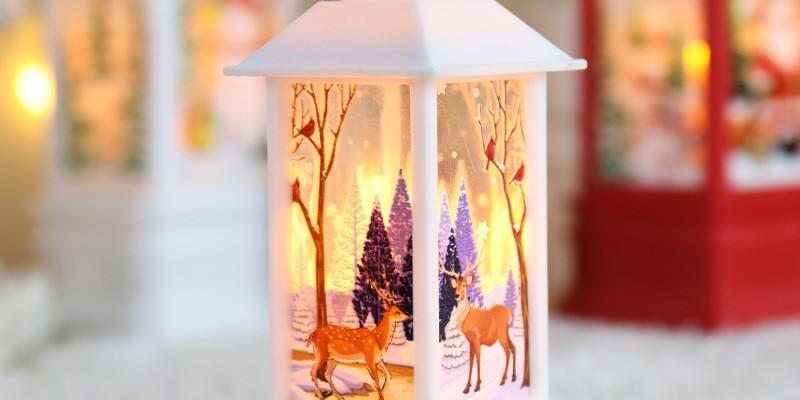1. Why IP Ratings Matter in Outdoor Lighting 🌧️
When it comes to outdoor lanterns, durability depends largely on how well they resist dust and water. The Ingress Protection (IP) rating defines this resistance, helping buyers choose the right product for their target environment—be it a mild patio, coastal villa, or heavy-rain camping site.
Understanding IP codes not only helps you prevent product failure and warranty issues but also ensures compliance with regional standards like EN60529 and IEC60529. Importers who master these basics reduce after-sales risks and maintain higher customer satisfaction rates.
Before diving into procurement, it’s helpful to benchmark materials and design standards from Lantern Factory to identify which IP levels fit your outdoor portfolio.
2. What Does “IP” Really Mean? ⚙️
“IP” stands for Ingress Protection, followed by two digits:
-
The first digit (0–6) indicates dust protection.
-
The second digit (0–9) shows water resistance.
Example:
-
IP44 – protected against solid objects >1mm and water splashes.
-
IP65 – fully dust-tight and protected against low-pressure water jets.
-
IP67 – fully dust-tight and resistant to temporary immersion (up to 1m for 30 min).
Each level defines how outdoor lanterns behave under rain, humidity, or exposure to outdoor cleaning processes.
3. IP44: The Basic Outdoor Protection 🏠
Lanterns with IP44 are suitable for covered patios, balconies, and indoor-outdoor transition spaces. They handle occasional splashes but should not be directly exposed to heavy rain.
Applications:
-
Wall-mounted decorative lanterns
-
Entryway or veranda lights
-
Garden lights with partial shelter
IP44 models are cost-effective and ideal for decorative markets where style matters more than industrial-grade protection. Buyers can easily source them through reliable decorative-focused suppliers such as Decorative Lanterns Manufacturer.
4. IP65: Balanced Protection for Everyday Outdoor Use 🌦️
IP65 lanterns offer a higher protection level, making them suitable for garden paths, outdoor cafes, and semi-exposed spaces. They can withstand dust, wind, and light rain without performance loss.
Design features often include:
-
Sealed LED modules
-
Silicone gaskets around joints
-
Powder-coated metal frames
These lanterns provide an excellent cost-performance ratio, making them the most popular choice for outdoor retail and wholesale markets.
5. IP67: Heavy-Duty for Harsh Environments ⛈️
Lanterns with IP67 protection are fully sealed against dust and can survive temporary immersion in water. They’re typically chosen for coastal areas, mountain resorts, or extreme-weather installations.
Key features:
-
Overmolded cable glands
-
Fully potted LED drivers
-
Marine-grade aluminum or 316 stainless steel bodies
While IP67 lanterns cost slightly more, their lifespan in harsh conditions justifies the premium—especially for long-term public installations and contract projects.
6. Testing & Certification 📑
Buyers should always request third-party IP testing reports or in-house verification data. Standard tests include:
-
Dust chamber simulation for 8 hours
-
Water spray and immersion testing
-
Temperature and humidity cycling
Compliant suppliers often label IP ratings on both packaging and data sheets, supported by inspection photos. For large-scale orders, importers can request batch sampling before shipment to verify consistency.
7. Material and Design Considerations 🔩
Different materials react differently to moisture:
-
Stainless steel (304/316): Best corrosion resistance
-
Aluminum: Lightweight and cost-efficient with anodized or powder-coated finish
-
Plastic or resin: Low-cost, suitable for solar or battery lanterns
Gasket quality and enclosure design are equally important. A poor seal can downgrade an IP67 design to IP44 in real-world performance, leading to condensation or rust inside the housing.
8. Balancing Cost and Market Demand 💰
When sourcing, balance the IP level with your target market’s needs:
-
IP44 for decorative indoor-outdoor retail
-
IP65 for mainstream garden & café applications
-
IP67 for premium or coastal projects
Selecting the right protection level helps you meet customer expectations without inflating costs. Tiered offerings allow distributors to cover multiple market segments under one brand umbrella.
9. Summary 🌏
IP ratings are more than just technical jargon—they directly affect reliability, safety, and consumer trust. From splash-proof decorative models to fully sealed heavy-duty designs, each rating serves a distinct use case.
Understanding IP levels allows importers to create structured product lines that align quality, performance, and cost. With verified suppliers and proper documentation, your outdoor lantern collection can meet both regulatory and aesthetic demands while minimizing long-term risks.




















